St. John Paul II’s Poland: Where He Lived and Grew in Holiness
A Visit to Papal-Focused Museums in Krakow and Wadowice

Millions of Catholics from around the world are attracted to the former Polish capital of Krakow because of the Divine Mercy Sanctuary and its proximity to Auschwitz, the site of the martyrdom of St. Maximilian Kolbe, and the major Marian shrine of Jasna Gora in Czestochowa.
But Catholic visitors to what’s sometimes referred to as “Little Rome” should not forget to visit Karol Wojtyła’s childhood home in nearby Wadowice, now a major museum, and his former home at Tyniecka Street, the place where he lived when he replied to God’s summons and decided to become a priest.
Wadowice is a small town of about 20,000 residents located an hour’s bus ride from Krakow. The house where Karol Wojtyła was born May 18, 1920, is located on Wadowice’s main square. That one has arrived in St. John Paul II’s birthplace becomes evident upon walking into the square: There is an abundance of Polish and Vatican flags, plaques with the names of all the Polish cities and countries John Paul visited as pope decorating the ground, and the large statue of the Polish Pope between his childhood home and the adjacent Basilica of the Presentation of the Blessed Virgin Mary.
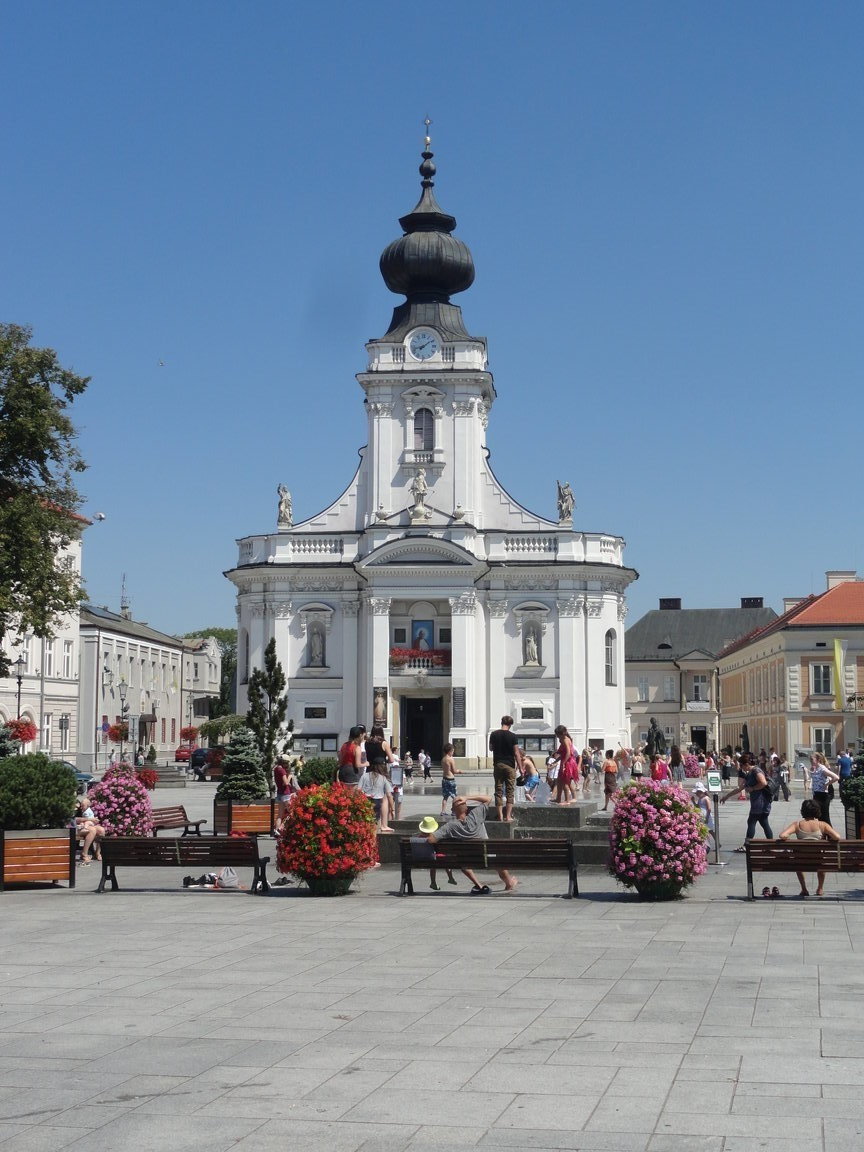
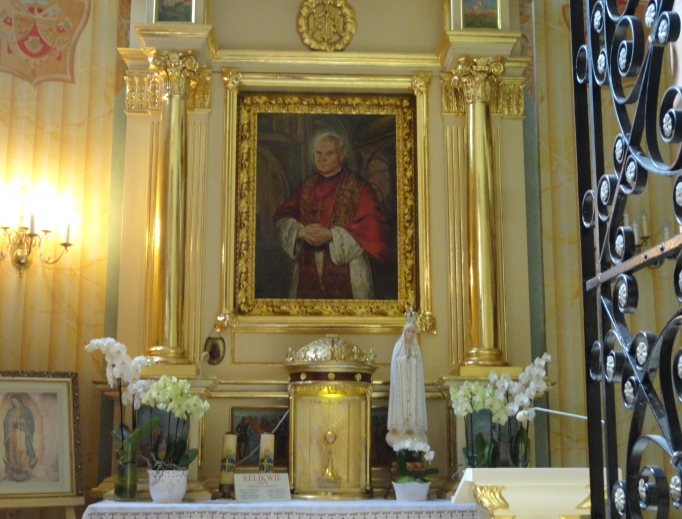
The close proximity of the Wojtyłas’ home to the basilica attests to the devout Catholic environment in which the future Pope grew up. Tour guides will tell visitors that when Karol was born, his parents opened the windows and the first thing he heard was the singing during a May devotion to Mary.
Seventy-minute guided tours of the John Paul II Family Home Museum in numerous languages start every 10 minutes. The first room is devoted to Wojtyła’s childhood and youth, displaying, for example, his high-school diploma and programs of plays he acted in as a young man. Adjacent to the first room is a moving tribute to Wadowice’s Jewish community, with photos of Wadowice’s Jews accompanied by their biographies; most were killed by Germans during the Holocaust. This section is a reminder that John Paul II’s legacy as a great builder of bridges between Christians and Jews began in Wadowice. The second floor of the museum contains the three rooms where the Wojtyłas lived. While most of the furniture there was not used by the Wojtyłas, it corresponds to the epoch when they lived in the house. The remaining rooms on the second floor deal with John Paul’s pontificate, including: his surprise election as pope in 1978, his pastoral travels, World Youth Day, his death, John Paul II as the “Pope of the Family,” and the many holy men and women he canonized and beatified.
The Wadowice museum features much valuable memorabilia that played a crucial role in John Paul II’s life. Among them are a first-degree relic: pants worn by John Paul’s bodyguard during the 1981 assassination attempt by Ali Agca, stained by the Pope’s blood. There is also the rifle that Agca used, a donation from the Italian police. Visitors to the museum get a sense of Wojtyła’s passions by seeing his skis and the kayak he would use both for kayaking and as an altar as a young priest during his excursions with university students, encounters that would later evolve into the idea for World Youth Day. The scapular that Wojtyła received for his first Holy Communion is also on display.
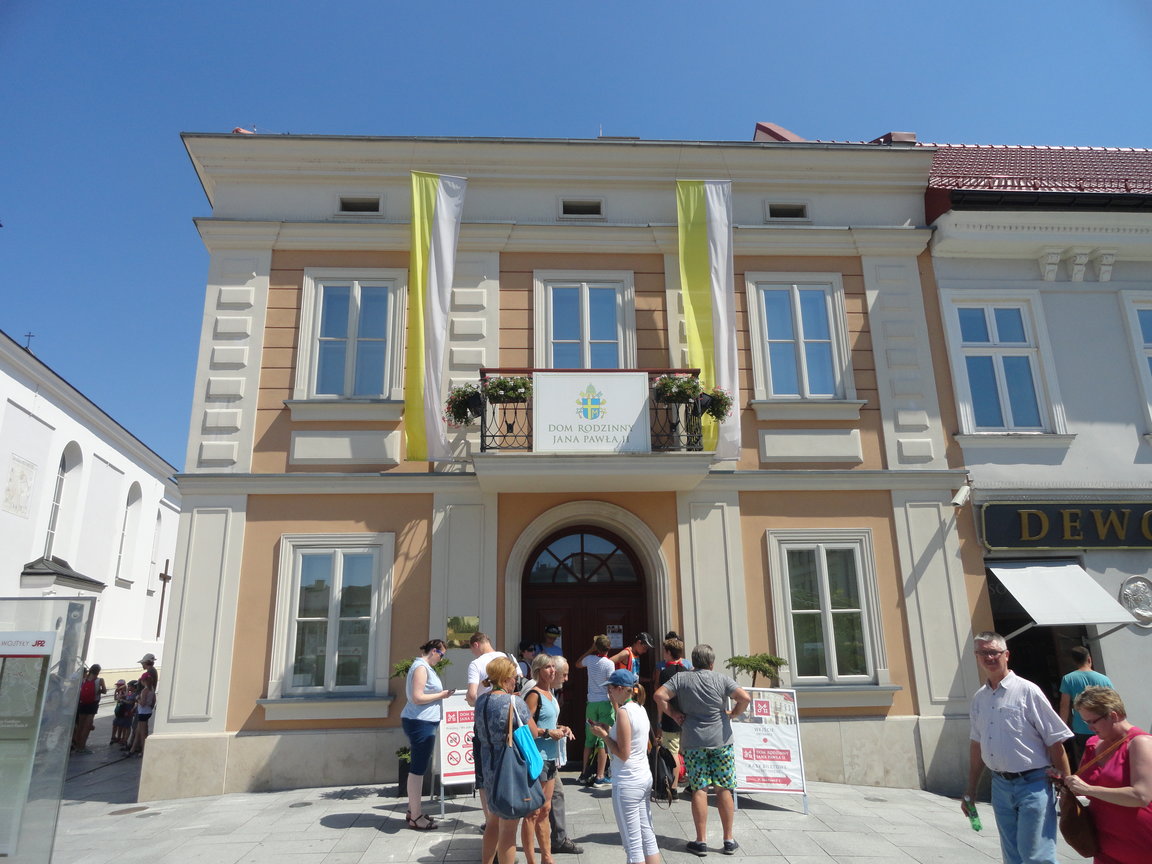
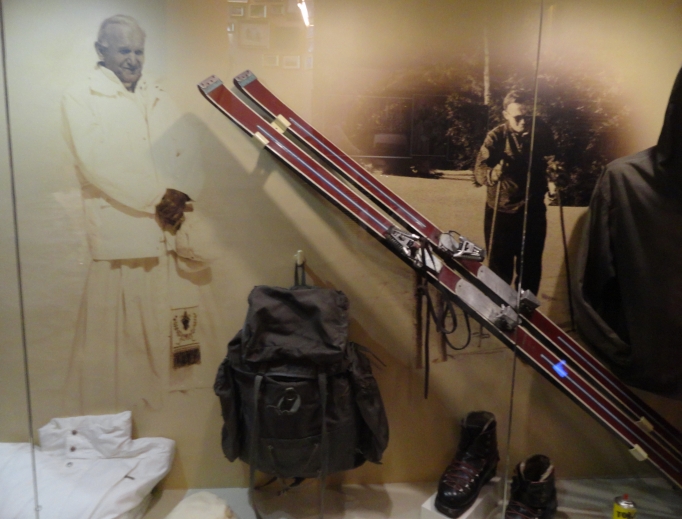
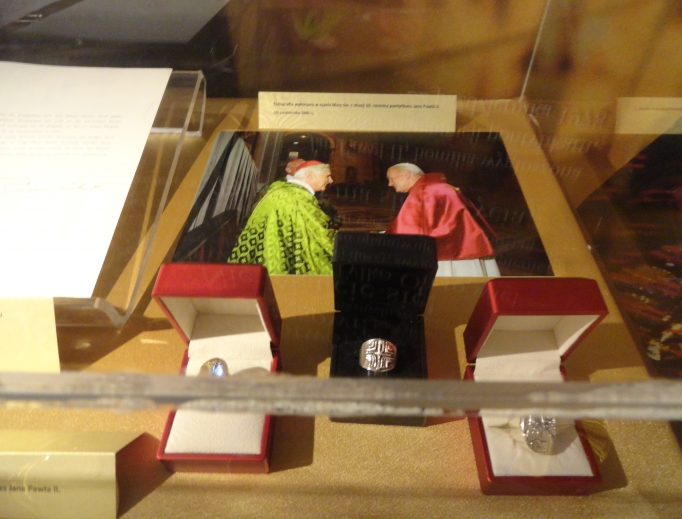
The most recent addition to the museum is a gift from Pope Emeritus Benedict XVI: three letters and three rings John Paul II gave to his successor. Another valuable donation to the museum is the rosary that Fatima visionary Servant of God Sister Lucia dos Santos gave the Pope. Visitors can see three cassocks John Paul wore: one as a parish priest, one as a cardinal, and the one he donned on the balcony of St. Peter’s Basilica upon his election as successor of St. Peter.
Interactivity is a key feature of the museum. Many rooms feature interactive screens in Polish and English. For example, the exhibit on John Paul II’s travel features a large screen on which visitors can learn about each of the Pilgrim Pope’s visits to more than 130 countries and the social and political context of each pastoral trip. The room devoted to the record number of saints and blesseds John Paul raised to the altars features a screen with biographies of many of them, from Mother Teresa to Maximilian Kolbe. The final room features 3,000 handwritten petitions by faithful from around the world, asking for graces through John Paul’s intercession.
The most memorable parts of the Wadowice exhibit are those that tangibly show how the hand of Providence was directly present in John Paul II’s life.
For example, the book containing the Gospels that was placed on John Paul’s coffin during his funeral is on display. Tour guides recall that, during the funeral, a sudden gust of wind (a traditional manifestation of the Holy Spirit) appeared out of the blue and turned every page and abruptly closed it, as if symbolizing John Paul’s life. And tour guides in the museum often explain that the Browning HP 9mm gun that Ali Agca used to try to kill the Pope is almost always foolproof, yet it did not go off on the third shot, while the bullet was just millimeters away from John Paul’s vital organs yet seemed to have miraculously avoided them. One year later, it is explained, the Pope traveled to Fatima to place the bullet that nearly killed him in the crown in the statue of Mary, and it fit inside perfectly. These unusual occurrences are difficult to see as mere coincidences in the life of the Pope who trusted so much in Providence.
In 1938, Karol Wojtyła was accepted to study Polish literature at the Jagiellonian University and thus left Wadowice for Krakow with his father (his mother and brother had passed away). The Wojtyłas moved into a home owned by the future pope’s aunt on 10 Tyniecka St. It was in that home that the Rhapsodic Theater, a group of actors, including Wojtyła, who performed the classics of Polish literature as a form of cultural resistance during the German occupation of Poland, held rehearsals. Today, the home at Tyniecka Street — a short walk from Wawel Castle, where Poland’s kings and queens are buried — houses a museum.
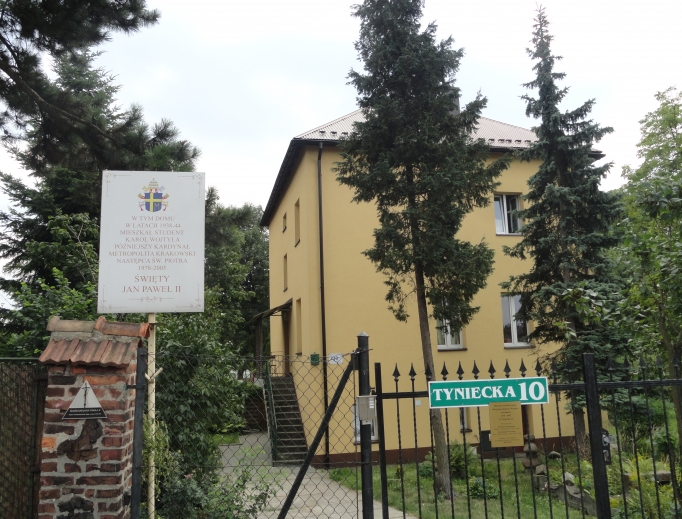
The Tyniecka home exhibit is much more modest than the Wadowice museum, although it is worth visiting to see how Karol Wojtyła lived during the formative years of 1941-1944. The museum features many copies of photographs from Wojtyła’s youth, including class photos and pictures of him working at the Solvay quarry to avoid deportation as a slave laborer to Germany. While the furniture in the home is not original, it is the same vintage as that which would have been found in the Wojtyła household.
Pope St. John Paul II’s pontificate, thanks to which the Church and the world have forever been transformed, was shaped by the family, time, place, culture and turbulent history in which he came of age. Thanks to the fine museums in Krakow and Wadowice, the faithful can experience how they all contributed to Karol Wojtyła’s vocation — for his Oct. 22 feast day or anytime of year.
St. John Paul II, pray for us!
Filip Mazurczak writes
from New York.
- Keywords:
- filip mazurczak
- poland
- st. john paul ii

















